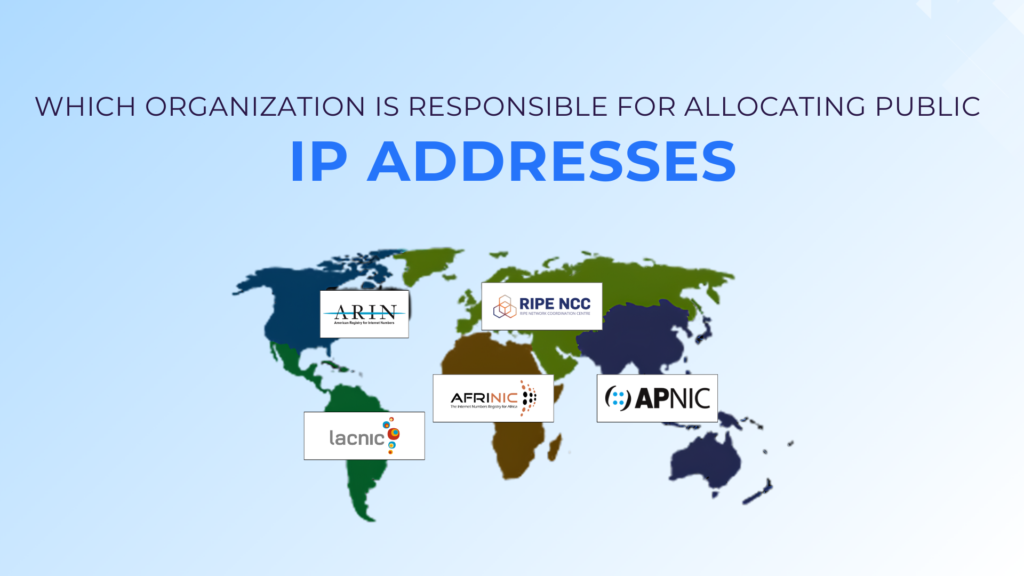In the realm of internet infrastructure, the allocation of public IP addresses is overseen by key organizations to ensure global connectivity and functionality. Let’s delve into the details of how this process works and who is responsible for it.
Internet Assigned Numbers Authority (IANA)
The Internet Assigned Numbers Authority (IANA) holds a pivotal role in managing various fundamental elements of the internet, including IP address allocation. Established to maintain the global coordination of DNS root zones, IP addressing, and other internet protocol resources, IANA ensures that these resources are used in accordance with technical standards that underpin web addressing.
Responsibilities of IANA:
- IP Address Assignment: IANA assigns unique IP addresses and manages the allocation of IP address blocks to regional internet registries (RIRs).
- Domain Name System (DNS): Manages the root name servers, maintaining a central database essential for the DNS.
Regional Internet Registries (RIRs)
While IANA oversees the global coordination, Regional Internet Registries (RIRs) are responsible for the distribution of IP addresses within specific geographic regions. These organizations operate under policies developed by their respective communities to ensure fair and efficient allocation.
Key RIRs include:
- ARIN (American Registry for Internet Numbers): Manages IP addresses in North America, parts of the Caribbean, and North Atlantic islands.
- RIPE NCC (Réseaux IP Européens Network Coordination Centre): Handles IP addresses in Europe, the Middle East, and parts of Central Asia.
- APNIC (Asia-Pacific Network Information Centre): Manages IP addresses across the Asia-Pacific region.
ICANN’s Oversight and Policy Framework
ICANN (Internet Corporation for Assigned Names and Numbers), a nonprofit organization, oversees IANA’s functions through its affiliate, Public Technical Identifiers (PTI). ICANN ensures that global IP address allocation, management of the root zone in DNS, and other critical internet resources are handled effectively and transparently.
The IP Address Allocation Process
The allocation of IP addresses involves several structured steps to manage and distribute these crucial resources:
1. Reservation of Address Space
RIRs reserve blocks of IP addresses based on regional needs and internet infrastructure growth projections.
2. Application and Justification
ISPs and organizations submit applications to RIRs, outlining their requirements for IP addresses and justifying the need based on technical and operational criteria.
3. Review and Approval
RIRs evaluate applications against community-established policies to ensure equitable distribution and efficient utilization of IP addresses.
4. Distribution to ISPs
Once approved, RIRs allocate IP address blocks to ISPs, who further distribute them to end-users and organizations.
5. End-User Allocation
End-users receive IP addresses from ISPs for their specific network operations, completing the allocation cycle.
The Future of IP Allocation: IPv6
As the pool of IPv4 addresses nears exhaustion, the transition to IPv6 represents a pivotal shift towards a vastly expanded address space. IANA and RIRs are actively involved in facilitating this transition to IPv6, ensuring sustained growth and connectivity for the future of the internet.
By understanding the roles of IANA, RIRs, and the processes involved in IP address allocation, stakeholders can navigate the complexities of internet infrastructure management with clarity and efficiency. This structured approach ensures that IP addresses are allocated and managed in a manner that supports continued global connectivity and innovation.
Frequently Asked Questions
IANA serves as the global coordinator for essential internet resources, including IP addresses and DNS root management. It ensures that these resources are allocated and managed efficiently to support worldwide internet connectivity.
RIRs operate independently within their respective regions, following community-developed policies to distribute IP address blocks fairly and sustainably. This approach helps meet the diverse needs of internet infrastructure across different continents.
The depletion of IPv4 addresses has spurred efforts to transition to IPv6, which offers a vastly larger pool of addresses. This transition is essential for accommodating the exponential growth of internet-connected devices and ensuring long-term sustainability.
Organizations must provide detailed plans and technical justifications for IP address allocations. This ensures that resources are used efficiently and that allocations support current and future operational requirements.
A static IP address is beneficial for hosting services, bypassing ISP filters, and presenting a professional image online.
ICANN oversees IANA's functions through its affiliate PTI, ensuring transparent and accountable management of IP address allocation, DNS root zone maintenance, and other critical internet resources. This oversight promotes global internet stability and reliability.






